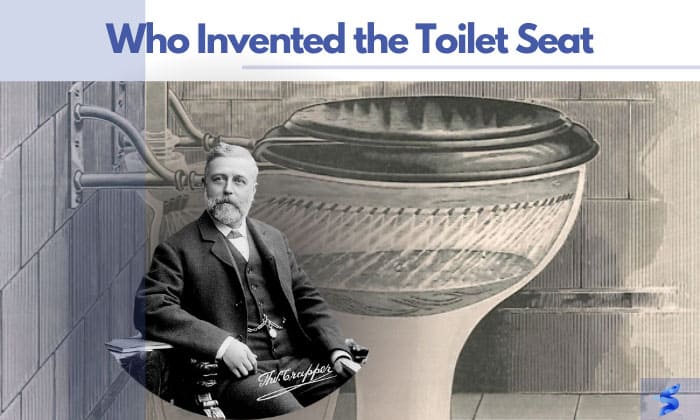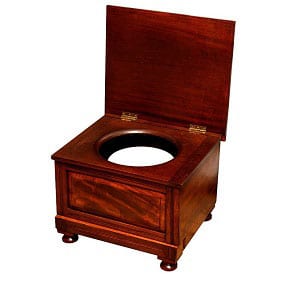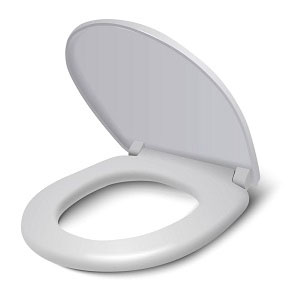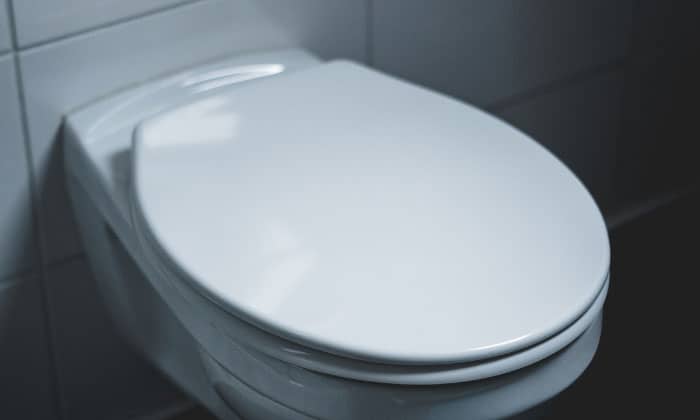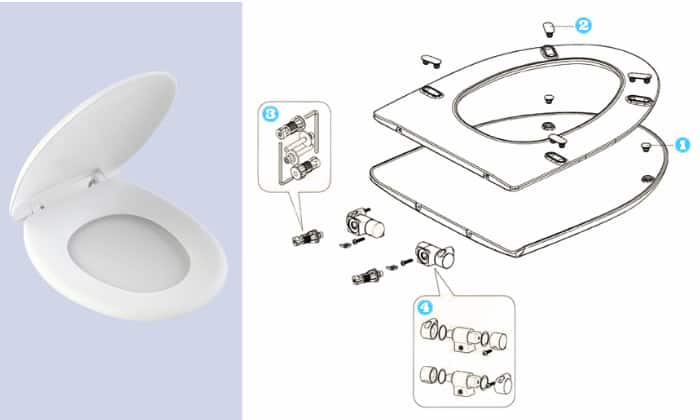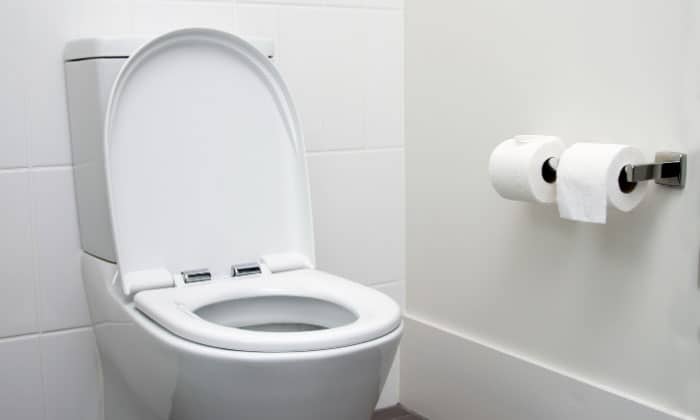Whenever I use the toilet, I always put the toilet seat down and sit on it. I’m always thankful to the designer of this magnificent piece of invention because it gives me a sense of protection. So, who invented the toilet seat anyway?
The toilet seat has long existed during old Roman times, but it was in 1895 that the first oval toilet seat was developed by Thomas Crapper as an upgrade to Sir John Harrington’s flush toilet design in 1592. Stanley Samuel created the first soft toilet seat in 1955.
We’ll detail the evolution of toilet seats and show their anatomy with pictures below. But before we start, let’s determine the importance of a toilet seat.
Table of Contents
Why is It Invented?
The toilet seat serves as a protective barrier against germ infection. Imagine a public restroom that welcomes plenty of users. When you sit on the hinged unit, you don’t get direct contact with the bowl that harbors millions of bacteria from human waste.
Using the toilet seat also makes it more comfortable to do your business. You can sit more steadily because the toilet rim can be awkward and colder.
Also, you can enjoy more advanced built-in features like a heater or bidet with high-end models.
More mportantly, cleaning becomes easier with the toilet seat on. You can simply wipe any splashes of water or stray urine before and after each use.
Toilet Seat’s Evolution
The design of toilet seats has come a long way. From stone to wood and rubber, here’s a timeline of toilet seat inventions.
1. When was the sitting toilet invented?
The first toilet seat dates back four millennium years ago in Rome in the form of communal latrines. The rich people sit on limestone while the poor sit on wicker stools with a hole in the center.
Following the Middle Ages, people sat on wooden toilet seats. The people in luxury sit on a commode or a box with a concealed chamber pot underneath it. Meanwhile, the rest use planks to sit on dirty pits.
The first hinged toilet was introduced during the Victorian era. Who made the toilet seat? Thomas Crapper replicates the throne’s seat and creates a wooden oval-shaped toilet seat, which is an upgrade to Sir John Harrington’s flush toilet design. In 1955, Stanley Samuel patented the first soft toilet seat as an innovation.
2. Materials Design: Development Through The Years
Porcelain is the most preferred type of toilet seat, but the cost can be pretty high. If you want something cheaper, you can opt for ceramic toilet seats. Lately, many toilet seats are made of ABS plastic or PP because they’re lightweight and inexpensive.
Stanley Samuel spearheaded the development of soft toilet seats in the industry. Instead of rubber, David Harrison used polyurethane foam to make a softer toilet seat in 1972. The following years brought several upgrades, including a gel-made seat, a fragrance-filled one, and even an integration of music.
The padded toilet seat became a hit because of its extreme comfort, thanks to Matt DiRoberto in 1993. Further improvements lead to the development of washable seat toilet cushions, which come in a variety of colors and designs.
Today, a modern toilet seat can be equipped with many convenient features, such as a bidet, LED lights, and temperature settings.
The Meaning Behind the Inventions
The toilet seat meaning refers to the oval ring hinged above the toilet bowl where you sit when doing your business. A commode is another toilet seat name, which describes a box that contains a chamber pot to catch waste.
The design of the toilet seat comes from the need to use the toilet more comfortably. It’s similar to a chair where you can sit upright with ease. This seat can also be used safely thanks to additional features like a non-skid surface and lids.
Most restrooms feature an open-front toilet seat because it makes it more hygienic for women. Women can do their business and clean afterward without touching the dirty bowl. You’ll see this shape often in public restrooms because it’s a plumbing requirement, but some homes often adopt this type of shape.
Parts of a Toilet Seat
The main part of the toilet seat anatomy is the seat itself, where you sit when using the toilet. The shape and material may vary depending on the model and brand.
The lid serves as the cover of the toilet seat and bowl when not in use. Close it when you flush to keep the germs at bay.
As shown in the toilet seat image above, the hinge is the part that hooks the seat and lid to the toilet bowl. To connect the hinge, you’ll need bolts. Keep the hinge and bolts tight to secure the seat in the toilet.
Frequently Asked Questions
Why do toilets have lids?
The lids trap the germs inside the toilet bowl and drain. Each time you flush the toilet, the swirls of water can spatter and spread some particles inside your bathroom. To keep your environment clean, use the lid to cover the toilet while flushing or not using the toilet.
What’s about the toilet cover?
A toilet seat cover serves as an extra layer of protection from the toilet. In some instances, the toilet seat itself can be laden with germs, especially if many people have used it.
Therefore, to protect yourself from direct contact with germs from the toilet seat, you’ll need to use a disposable seat cover.
Most people use a toilet seat cover to protect themselves from getting infected with diseases. Compared to paper seat covers, plastic is more effective in this regard. Others even come in decorative pieces to add aesthetics to home bathrooms.
Why are there two toilet seats?
A two seat toilet is designed for family use. One toilet seat is meant for adults and another for children. This type of design saves space when you’re potty training your kids.
Do toilet seats fit all toilets?
No, toilet bowls are available in many shapes, such as rectangles and elongated ones. In addition, toilet seats also come in different forms, namely U or O shapes.
To replace the right toilet seat, make sure that it conforms to the shape of your toilet. Measure your toilet and find a seat that fits.
Conclusion
I hope that you know who invented the toilet seat at this point. It can be traced back to old civilizations, but one thing remains the same. All the toilet seat designs aim to make the toilet more comfortable and hygienic.
The material and shape may vary, so choose one which makes you the most comfortable.
Share with us your thoughts about this article in the comment section below.
Related:

I’m Paulk Webb, and I work as a writer for Saveourwaterrebates. I’m happy to put in the time and effort to conduct market research to identify the most pressing issues faced by households concerning their plumbing. Feel free to check out our guides to get the most informed recommendations for how to solve your problems.


